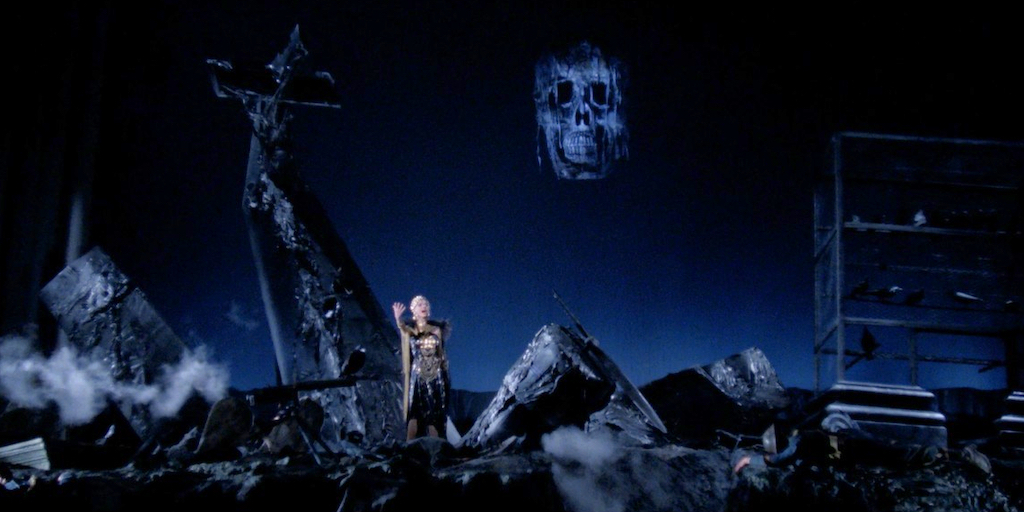How The Phantom of the Opera Still Haunts Italian and Chinese Cinema
You couldn’t even hear the music in the first film adaption of Gaston Leroux’s The Phantom of the Opera: a 1916 Swedish silent that is sadly now lost. Parts of Universal’s classic 1925 silent film are also missing, but Lon Chaney’s makeup is as iconic as any of their classic monsters. Since then, something about the Byronic Erik the Phantom keeps tempting horror auteurs to take their own shots at the operatic bogeyman. For very particular reasons, The Phantom has been particularly resonant for Italian and Chinese filmmakers.
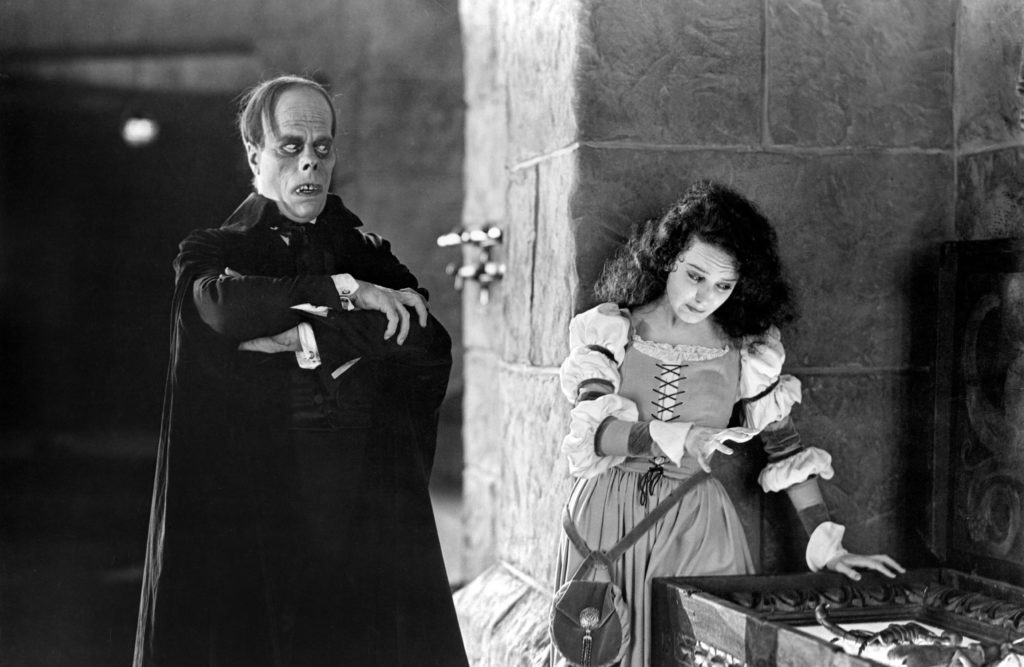
Arguably, it’s all a question of wardrobe for Giallo Phantoms. When outfitting the Phantom, you might start with patent leather gloves and a cape. Then maybe you accessorize with a cane, opera glasses and of course, a mask, all of which also make for the perfect costume of a classic Giallo psycho-killer.
Technically, Dario Argento’s Opera (streaming on Tubi) is not an adaptation, per se, but it is clearly inspired by Leroux. In this case, Betty, the young understudy is not the killer’s protégé. In fact, he repeatedly torments her by forcing her to watch his brutal murders, thanks to his facility with knots and the spike he tapes under her eyes. Sometimes their short-term interests coincidentally overlap, as when he forces the diva out of her starring role, but in the long-run, he is definitely out to get her.
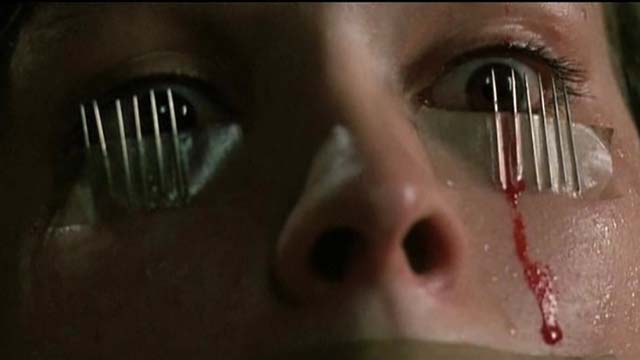
If Martians landed on Earth and asked you to explain the Giallo style, Opera might be the film to show them. It is a bold, breathlessly sweeping, shamelessly violent film that often shows the drama unfold through the killer’s eyes. It also features the final film performance of Ian Charleson (best known as the missionary-athlete Eric Liddell in Chariots of Fire), who is terrific as the brilliant but manipulative theater director, Marco. Changing the opera’s company’s production from Faust to Macbeth was also a clever alteration, because of the “Scottish Play’s” cursed reputation.
After riffing on the Phantom, Argento officially adapted The Phantom of the Opera in 1998 (recently released on BluRay from Scorpion), but this Erik has no mask or scars—he is Julian Sands, sporting a shoulder-length Fabio coif. In fact, his favored understudy, Christine Daaé (played by Argento’s daughter Asia), is perfectly willing to sleep with her mysterious benefactor. However, she is also open to the Vicomte’s sexual overtures, thereby establishing a deadly love triangle.
At times, this Phantom appears to hold mind-control powers, but he only exercises them at times when the stakes are at their lowest. In most respects, the ’98 Phantom is a pale shadow of Opera, but at least it also generated a lot of work for animal handlers. In this case, the Phantom has a close alliance with the Parisian sewer rats, who raised him as a child, whereas the Opera killer frequently battled with the trained crows that were part of the company’s Macbeth production.
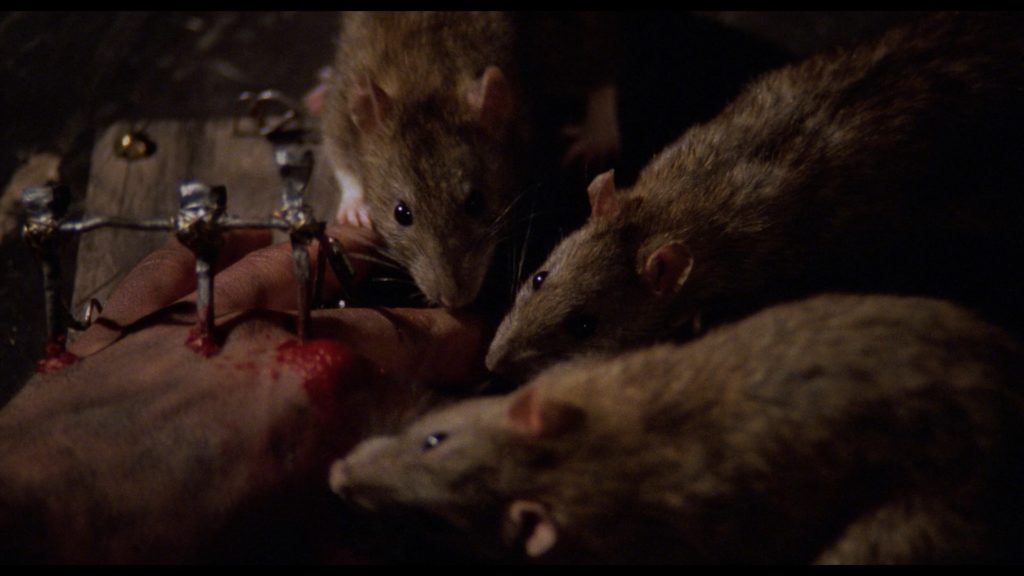
Ruggero Deodato’s Phantom of Death is not even a riff on Leroux. At best, it is a half-riff, but a Giallo with such a title, set within the world of classical music, inevitably evokes the memory and spirit of Erik. In this case, the murderer also bears some similarities, being a musician, whose own body has rendered him an outcast. In this case, the serial-killer is afflicted with a rapid-aging disease, which bedevils poor Inspector Datti, whose conflicting forensic evidence first points to a young man, then suggests a middle-aged perpetrator, and finally implicates a sinister senior citizen.
Of course, Donald Pleasence is immediately credible as a monster-hunter, but his Datti turns out to be a surprisingly earnest and down-to-earth family man. Considering Deodato is infamous for the disturbingly gory Cannibal Holocaust and the moronic Cannon Films-produced The Barbarians, Phantom of Death might be his most watchable film.
While the Phantom has been compatible with Giallos for reasons of style, he translated well to Chinese cinema, because of ideology. The Chinese Communist Party (CCP) has long rejected fantastical and supernatural themes, instead mandating a materialistic world view. That makes gothic horror a challenge, but that brings us to the Phantom’s other appealing quality: he’s conveniently mortal.
The CCP had not yet consolidated control of the Mainland in 1937, but the Shanghai-based film industry often incorporated leftist propaganda in their films. You can definitely see it in Ma-Xu Weibang’s Song at Midnight.
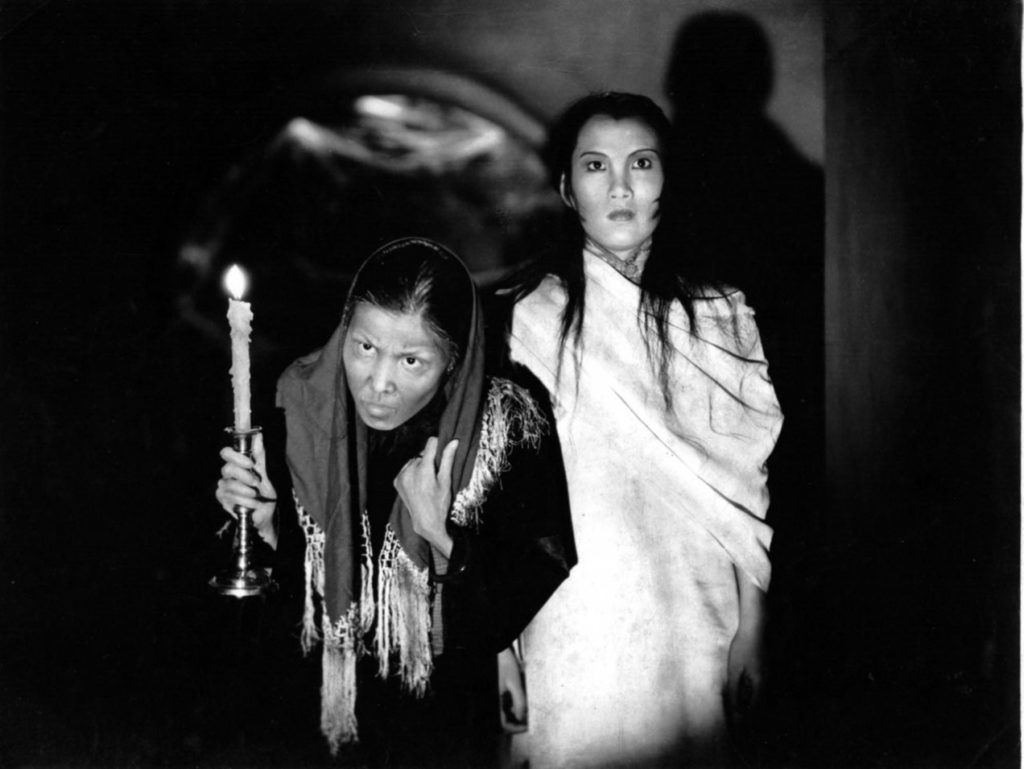
As the film opens, the Angel Theatre Troupe is somewhat alarmed by the decrepit state of the theater they booked, sight-unseen. It had been silent since the illustrious actor-impresario Song Danping was murdered by warlords. The reports of his demise are, of course, exaggerated, but his disfigurement is very real. He still haunts his old theater, where he starts tutoring the company’s leading man, Sun Xia’ou (in a bit of a gender switch). In return, Song asks Sun to console his former lover, Lu Die, who was driven mad by reports of his death, by pretending to be Song.
Song at Midnight (public domain, widely posted online) was a great hit, even though it forces viewers to sit through the strident propaganda opera Hot Blooded, not once, but twice. However, it certainly leans into the gothic trappings of the Phantom and even ends with a vintage Universal Monster-style ending, in which the misguided peasantry chase after the monstrously scarred Song with pitchforks and torches.
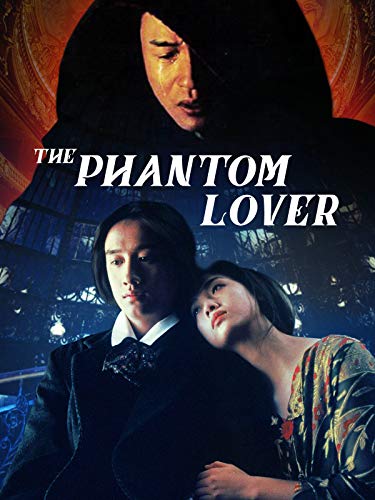
Obviously, Song at Midnight was a hit, because it was remade at least six times. The most notable by far is Ronny Yu’s Hong Kong-produced The Phantom Lover (1995, streaming on Tubi). Not surprisingly for Hong Kong pre-National Security Law, this film plays down Song Danping’s revolutionary background, portraying him as more of a tortured artistic soul. In most other respects, the narrative is quite faithful to the 1937 “original.”
Yu also leans more into the romantic elements of gothic fiction, rather than the horror, which is somewhat ironic considering he went on to direct Bride of Chucky and Freddy vs. Jason for Hollywood studios. Regardless, the sets of the decaying theater are definitely atmospheric. Frankly, they look like they could collapse around the cast at any moment.
Raymond Yip Wai-man’s Phantom of the Theatre (2016, on DVD from Wellgo USA) is definitely a riff rather than a remake, but if you subtracted the common elements shared with Leroux and Song of Midnight, there wouldn’t be much movie left. In this case, director Gu Weibang decides to shoot his latest horror film in a notoriously haunted palace-style movie theater. His leading lady Meng Sifan (transparently modeled on 1930s movie star Ruan Lingyu) brings the star power and the financing from her sleazy lover. Of course, the production must go on, even when people start to spontaneously combust.
Yip’s Phantom is a lot like Song of Midnight without the musical theater. It is no classic, but it is a lot of old-fashioned fun. The sets are baroque, the costumes are fab and it takes its Scooby-Doo-style haunted theater mayhem seriously. Plus, Ruby Lin gives an appropriately diva-like performance as the tragically seductive Meng.
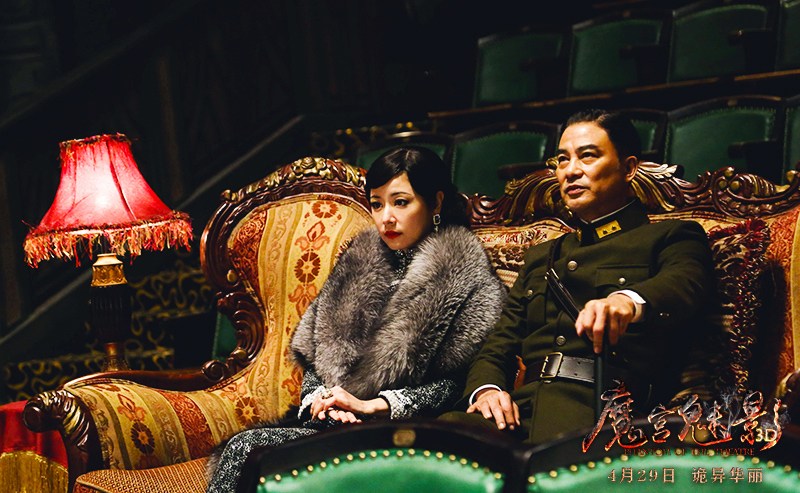
Obviously, there were a lot of Phantoms we went out of our way to ignore (like Gerard Butler strangling “The Music of the Night”). That just shows the range and pliability of Leroux’s creation. Probably the best of the above films is Argento’s Opera, and his Phantom of the Opera is most interesting when seen in dialogue with his prior film. New Yorkers can see them both on the big screen when world premiere 4K restorations of both films screen during Film at Lincoln Center’s upcoming Argento restoration (Opera plays 6/19, 6/23, and 6/24, while Phantom of the Opera plays 6/20 and 6/28).

